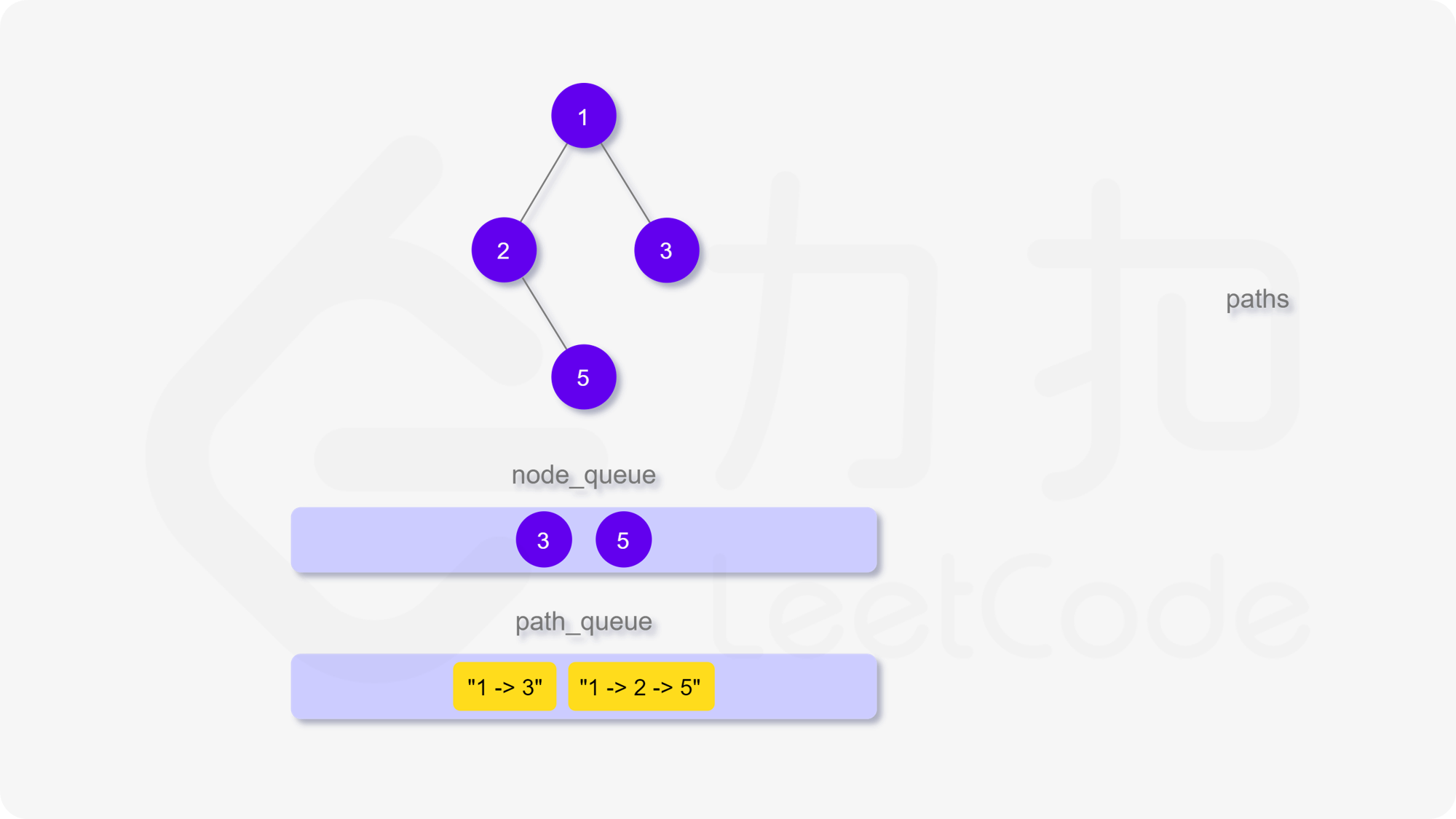本文最后更新于:2022年9月12日 晚上
给定一个二叉树,返回所有从根节点到叶子节点的路径。
说明: 叶子节点是指没有子节点的节点。
示例:
输入:1 \ 2 3 \ 5 "1->2->5" , "1->3" ]1 ->2 ->5 , 1 ->3
Solution
参考 代码随想录 ,分析回溯过程
1 2 3 4 5 6 7 8 9 10 11 12 13 14 15 16 17 18 19 20 21 22 23 24 25 26 27 28 29 30 31 32 33 34 35 class Solution {private :void traversal (TreeNode* cur, vector <int >& path, vector <string >& result) if (cur->left == NULL && cur->right == NULL ) {string sPath;for (int i = 0 ; i < path.size() - 1 ; i++) {"->" ;1 ]);return ;if (cur->left) {if (cur->right) {public :vector <string > binaryTreePaths (TreeNode* root) vector <string > result;vector <int > path;if (root == NULL ) return result;return result;
1 2 3 4 5 6 7 8 9 10 11 12 13 14 15 16 17 18 19 20 21 22 23 24 25 26 27 28 29 30 31 32 33 class Solution {public :vector <string > binaryTreePaths (TreeNode* root) vector <string > res;if (root==nullptr ) return res;if (root->left==nullptr && root->right==nullptr ){return res;vector <string > leftPaths = binaryTreePaths(root->left);for (int i=0 ; i<leftPaths.size(); ++i){"->" +leftPaths[i]);vector <string > rightPaths = binaryTreePaths(root->right);for (int i=0 ; i<rightPaths.size(); ++i){"->" +rightPaths[i]);return res;
迭代法,广度优先搜索 参考**@LeetCode官方**
维护两个队列,存储节点和根到该节点的路径。
1 2 3 4 5 6 7 8 9 10 11 12 13 14 15 16 17 18 19 20 21 22 23 24 25 26 27 28 29 30 31 32 33 class Solution {public :vector <string > binaryTreePaths (TreeNode* root) vector <string > res;if (root==nullptr ) return res;queue <TreeNode *> qNode;queue <string > qPath;while (!qNode.empty()){string path = qPath.front();if (node->left==nullptr && node->right==nullptr ){else {if (node->left){"->" +to_string(node->left->val));if (node->right){"->" +to_string(node->right->val));return res;
java
1 2 3 4 5 6 7 8 9 10 11 12 13 14 15 16 17 18 19 20 21 22 23 24 25 26 27 28 29 30 31 32 33 34 35 36 37 38 39 40 41 42 43 44 45 46 47 class Solution public List<String> binaryTreePaths (TreeNode root) new ArrayList<>();if (root == null ) {return result;new ArrayList<>();return result;private void traversal (TreeNode cur, List<Integer> path, List<String> result) if (cur.left == null && cur.right == null ) {new StringBuilder();for (int i = 0 ; i < path.size() - 1 ; ++i) {"->" );1 ));if (cur.left != null ) {1 );if (cur.right != null ) {1 );
1 2 3 4 5 6 7 8 9 10 11 12 13 14 15 16 17 18 19 20 21 22 23 24 25 26 27 28 29 30 31 32 class Solution public List<String> binaryTreePaths (TreeNode root) new ArrayList<>();if (root == null ) {return result;new LinkedList<>();new LinkedList<>();while (!nodeQueue.isEmpty()) {if (node.left == null && node.right == null ) {else {if (node.left != null ) {new StringBuffer(path).append("->" )if (node.right != null ) {new StringBuffer(path).append("->" )return result;
